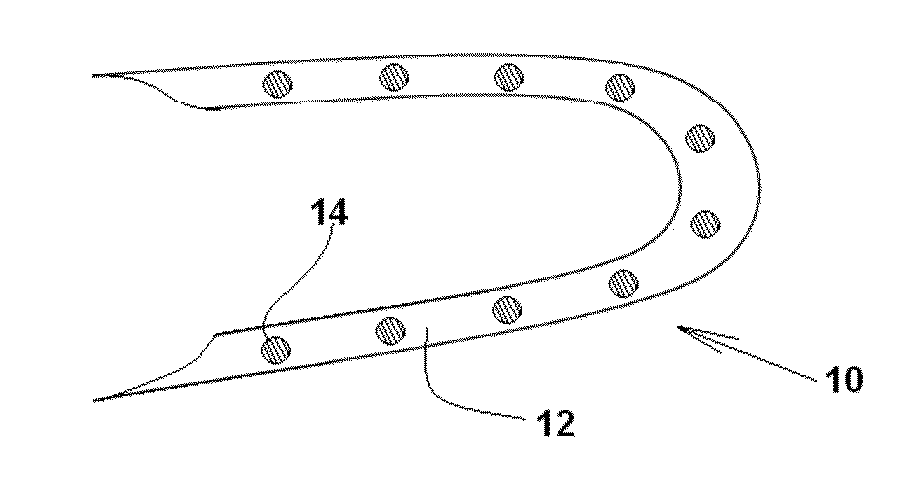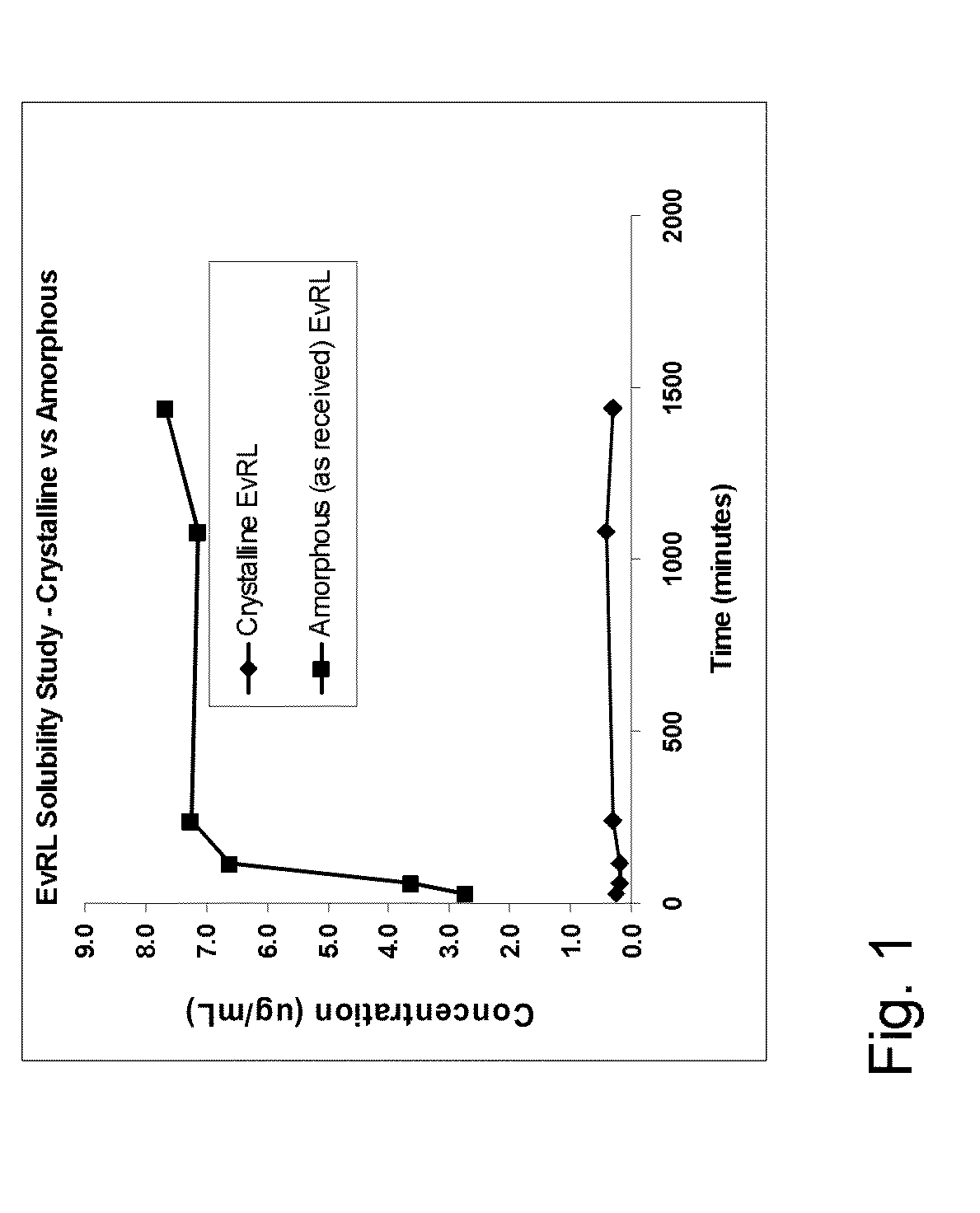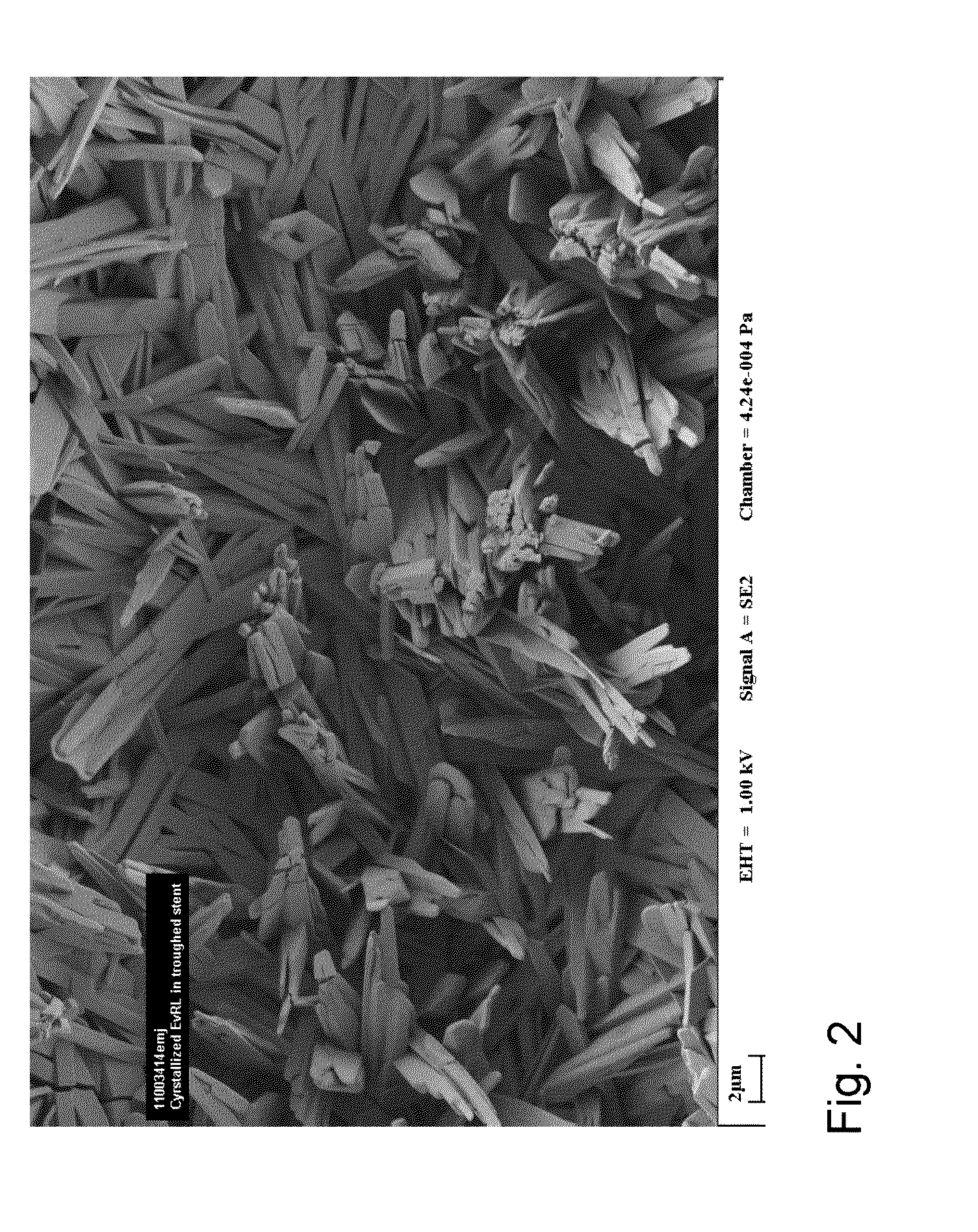Medical Device with Crystalline Drug Coating
- Summary
- Abstract
- Description
- Claims
- Application Information
AI Technical Summary
Benefits of technology
Problems solved by technology
Method used
Image
Examples
example 1
Generation of Crystalline Everolimus Via Seeding and Vapor Annealing
[0079]a. Preparation of Microcrystalline Everolimus
[0080]Amorphous everolimus is dissolved in isopropyl alcohol at 40 wt % with gentle warming at ˜40 C. The solution is allowed to sit at RT overnight resulting in crystallization of the everolimus. The large crystals are dried under vacuum at RT. 0.1 g of crystalline everolimus, 0.16 g water and 1.85g of 100um Zirconia beads are added to a SS ampule. The ampule is sealed and placed on a high speed amalgamator shaker for 20 min. Water (2 mL) is added to the resulting paste and the mixture is swirled to disperse the milled everolimus particles.
[0081]The water / everolimus dispersion is decanted off from the Zr beads and filtered through a 30um nylon mesh filter. The Zr bead slurry is washed an additional 3 times using about 2 mL water each time and each time the water / everolimus dispersion is filtered through 30 μm nylon mesh filter. The combined filtered dispersion is c...
example 2
Porcine Animal Study of Everolimus Coated Stents
[0092]Stents coated with either crystalline or amorphous everolimus (130 μg on 12 mm stents) were implanted in the coronary arteries and internal thoracic arteries of common swine. The stented vessels were explanted after 3 hrs, 24 hrs, 7,14 and 28 days. N=3 stents per timepoint were used. After sacrifice the stents were removed from the arteries and the amount of drug in the arteries was determined by LC / MS. The amount of drug remaining on the stent was determined by HPLC. Table 1 shows the amount of drug remaining in the tissue after 28 days and the amount of drug remaining on the stents. There is essentially no drug in the tissue at 28 days for stents coated with amorphous everolimus compared to 6 ng / mg for crystalline everolimus. There was no drug remaining on the stents after 28 days for the amorphous drug compared to 25% drug remaining on the stent with crystalline everolimus. This example shows the significant benefit of using t...
example 3
Crystalline Everolimus Coated Balloon Via Seeded Vapor Annealing
[0093]A 3 mm×16 mm balloon was syringe coated with 2 μL of a 1.4% solids everolimus microdispersion to provide the seeding layer. The coating was allowed to dry at RT. The balloon was then coated with 11 μL of a 3.8% soln. of everolimus in 75 / 25 (wt / wt) acetone / water to give a coat wt of about 3 ug / mm2 The balloon was vapor annealed with IPA vapor overnight to crystallize the everolimus. FIG. 10 shows a SEM image of the balloon showing the presence of crystalline everolimus.
PUM
| Property | Measurement | Unit |
|---|---|---|
| Length | aaaaa | aaaaa |
| Length | aaaaa | aaaaa |
| Length | aaaaa | aaaaa |
Abstract
Description
Claims
Application Information
 Login to View More
Login to View More - R&D
- Intellectual Property
- Life Sciences
- Materials
- Tech Scout
- Unparalleled Data Quality
- Higher Quality Content
- 60% Fewer Hallucinations
Browse by: Latest US Patents, China's latest patents, Technical Efficacy Thesaurus, Application Domain, Technology Topic, Popular Technical Reports.
© 2025 PatSnap. All rights reserved.Legal|Privacy policy|Modern Slavery Act Transparency Statement|Sitemap|About US| Contact US: help@patsnap.com



